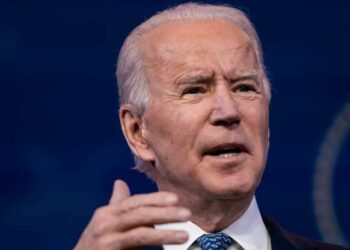When New York Representative Alexandria Ocasio-Cortez introduced her resolution for a Green New Deal, a manifesto of ambitious goals to combat climate change, she sparked heated debate in Washington and drew sharp criticism from her Republican colleagues.
According to a 2018 report by the Intergovernmental Panel on Climate Change, if humans keep global warming within 1.5 degrees Celsius, the planet will still experience warming of extreme temperatures, increased frequency and severity of heavy precipitation and droughts. Not only that, but rising sea levels will rise by up to 0.77 meters by the end of the century, which would impact tens of millions of people in vulnerable communities with increased saltwater intrusion, flooding, and damage to infrastructure. Keeping global warming within 1.5 degrees Celsius would require emissions reductions of 40 to 60 percent by 2030 and net-zero emissions by 2050, according to the report. This is our best case scenario.
Meanwhile, Americans are becoming increasingly concerned with climate change, as 66 percent believe global warming is caused by human activities and 44 percent now say they worry a great deal about global warming, according to a March Gallup poll. None of this has stopped conservative politicians and pundits from lambasting Ocasio-Cortez for suggesting a proactive response to the climate crisis.
Wait for it. Global temperature rise and what might be to come. Notice a pattern?
There is no time to wait, there is no planet B: https://t.co/c6CBnDPi6z
We must #ActOnClimate#GreenNewDeal #climate #energy #panelsNotPipelines pic.twitter.com/wHAEakd7an— Mike Hudema (@MikeHudema) May 30, 2019
“Alexandria Ocasio-Cortez’s document actually says that she’s committed to ridding America of flatulent cows and airplanes,” said Mark Steyn on Tucker Carlson’s Fox News show.
The text of the Green New Deal resolution, however, calls for no such bans and there’s not a word to be found about cows or airplanes. In actuality, the resolution is lacking much in the way of concrete, policy specifics. It instead paints a vision in broad strokes of a reduction of global greenhouse gas emissions to net zero by 2050, with a benchmark of 40 to 60 percent of 2010 levels by 2030.
Even if the resolution were to pass tomorrow, it wouldn’t actually have any tangible effects on U.S. climate policy. That’s because resolutions in Congress are non-binding, so what’s the point anyway?
Much like Franklin Delano Roosevelt’s New Deal, a swath of economic policies that led to the creation of Social Security and the federal minimum wage, the Green New Deal was never meant to be a single piece of legislation, but a broader set of goals from which to draw inspiration for more detailed policy.
“We know that nothing is going to pass under an administration that is hostile to any kind of climate policy,” National Press Coordinator Garrett Blad of the Sunrise Movement, a grassroots youth organization pushing for the Green New Deal, told The Globe Post.
“The resolution is purposely meant to carry a big umbrella of a vision and lay out the clear goals of what we want to accomplish. Over the course of this next year, we’ll develop [the Green New Deal] with input from organizations, businesses and governments to make sure that we’re developing policies that actually work for people and will benefit them and their lives instead of creating undue burdens for them.”
Ocasio-Cortez echoed the same point in a May 17 tweet, pointing to legislation introduced by Representative Mike Levin of California, which would fully transition vehicle manufacturers to zero-emissions vehicles by 2040.
“Fun fact: #GreenNewDeal is a resolution – aka an overarching policy framework – NOT a bill,” Ocasio Cortez said. “If you’re curious about what a world with a #GreenNewDeal might look like, [Mike Levin’s] Zero-Emissions Vehicle Bill is a great example.”
Levin’s bill, aptly dubbed the “Zero Emissions Vehicle Act of 2019” and introduced on May 15 alongside Jeff Merkley’s bill of the same name, is emblematic of how more specific policy can flesh out the broader framework of the Green New Deal Resolution.
Trump is creating a mess, literally.
Carbon emissions increased by 3.4% in 2018 marking the second largest annual gain in more than two decades.
— Mike Levin (@MikeLevin) January 8, 2019
One provision of the resolution suggests “Overhauling transportation systems in the United States to remove pollution and greenhouse gas emissions from the transportation sector as much as is technologically feasible, including through investment in zero emissions vehicle infrastructure and manufacturing.”
While the goal of reducing greenhouse gas emissions in the transportation sector is clearly stated, key details about how exactly such a policy might be implemented are still missing. That’s where bills like Levin’s can fill in the gaps.
The bill would achieve the transition to 100 percent zero-emissions vehicles by amending the Clean Air Act to create a national zero-emission vehicle standard. It would require vehicle manufacturers to make 50 percent of their sales zero-emissions vehicles by 2030 and gradually increase that figure in 5 percent intervals until reaching 100 percent of sales by 2040.
Manufacturers would be issued one zero-emissions vehicle credit for every zero-emissions vehicle sold. If a manufacturer sells more than the required percentage of vehicles sold, those credits could carry over for up to five years except after 2040. Manufacturers who fail to meet the requirement would incur a civil penalty “equal to twice the value of zero-emissions vehicle credits that the vehicle manufacturer failed to submit,” according to the bill’s text.
“People are producing electric cars now, so [transitioning vehicle manufacturers to 100 percent zero-emissions vehicles] is certainly possible,” William Dunford, an associate professor of engineering at British Columbia University, told The Globe Post.
“The main problem is infrastructure for charging and the range and cost of the batteries. The basic vehicle cost is not the problem, it’s the batteries which are still an expensive item.”
Of course, Levin isn’t the only member of Congress drafting climate legislation. Ted Lieu, has a bill of his own called the Climate Solutions Act of 2019 which sets similar, albeit slightly less ambitious emissions targets compared to Ocasio-Cortez’ resolution. Most importantly though, the bill lays out a clear process and timeline for hitting those targets.
Rep @JimmyGomezCA & I introduced one of the strongest bills ever to tackle #climatechange. The Climate Solutions Act requires 100% renewable energy by 2035; a 80% reduction in all greenhouse gas emissions by 2050; & very strong energy efficiency standardshttps://t.co/17wZjKKMmO
— Ted Lieu (@tedlieu) January 9, 2019
Essentially, Lieu’s bill would make the Environmental Protection Agency Administrator responsible for setting emissions targets of 40 percent below 1990 levels by 2035 and 80 percent below 1990 levels by 2050. Within 5 years of the bill’s passage, and every 5 years thereafter, the National Academy of Sciences and the National Research Council would submit a report on the state of the climate crisis to the EPA and Congress. Finally, the EPA and Congress would decide how to respond based on the findings of each report.
Lieu’s bill would also require 100 percent of electricity be generated from renewable sources by 2035 and create a national efficiency standard that sets gradually increasing energy savings targets for “retail electric energy suppliers and natural gas suppliers,” according to a summary of the bill on the congressional website.
While the Green New Deal Resolution lays out the bone structure of a bold climate agenda, it’s legislation like the Zero-Emissions Vehicle and Climate Solutions Acts of 2019 that will be the flesh and blood needed to bring the Green New Deal to life.
The Green New Deal: A Generational Fight Over the Future of America






















